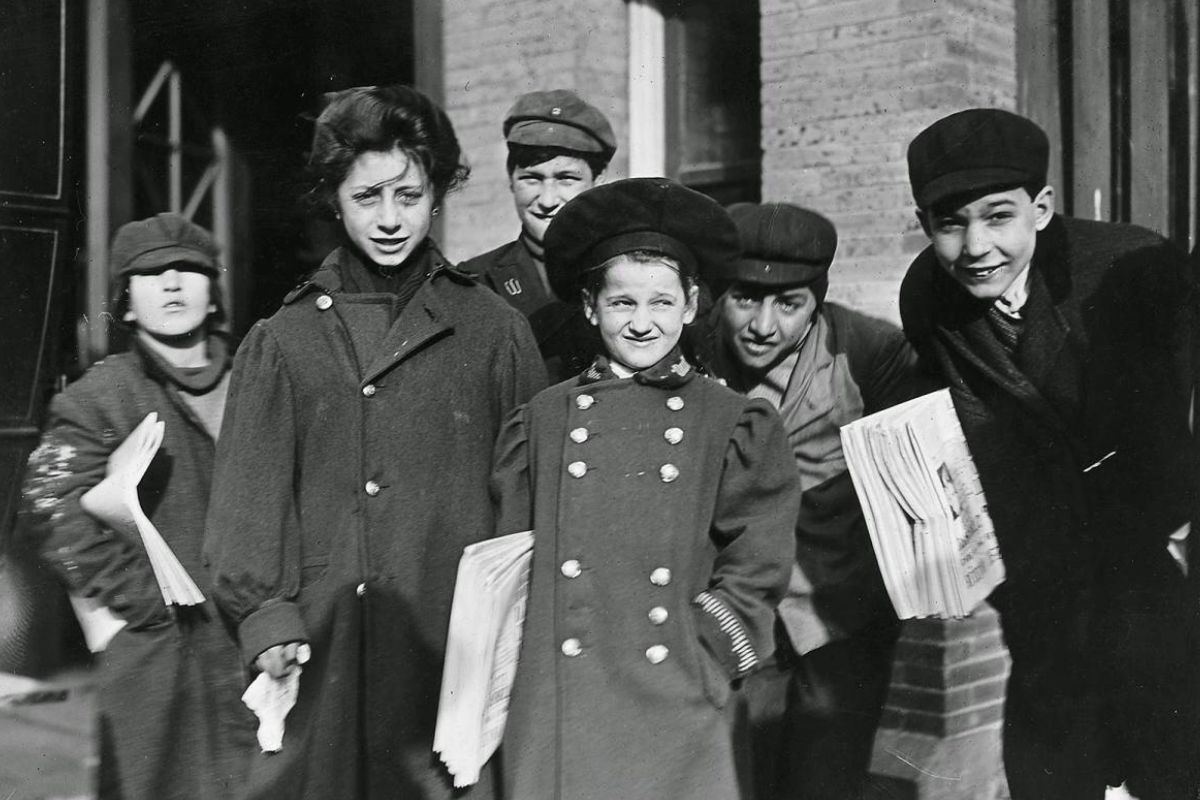
Ever wondered about the real story behind the musical "Newsies"? This beloved show, filled with catchy tunes and energetic dance numbers, is based on actual events from the 1899 newsboy strike in New York City. These young newsboys, often called "newsies," took a stand against powerful newspaper publishers like Joseph Pulitzer and William Randolph Hearst. Their fight for fair wages and better working conditions captured the spirit of youth and determination. But how much do you really know about the history of these brave kids? Get ready to dive into 35 fascinating facts that will give you a deeper understanding of the real-life heroes who inspired this Broadway hit.
Key Takeaways:
- Newsies, mostly immigrant children, emerged in the 1830s and faced tough conditions, inspiring reforms and becoming cultural icons.
- The Newsboys' Strike of 1899 and the decline of newsies marked their legacy, celebrated in popular culture and reminding us of their enduring resilience.
The Origins of Newsies
The story of newsboys, or "newsies," is a fascinating chapter in American history. These young workers played a crucial role in the distribution of newspapers during the late 19th and early 20th centuries.
-
Newsies emerged in the 1830s: The first newsboys appeared in the 1830s when newspapers began to be sold on the streets rather than through subscriptions.
-
Mostly boys, but some girls: While the majority of newsies were boys, there were also girls who took on the job, often to support their families.
-
Immigrant children: Many newsies were children of immigrants who had come to America seeking better opportunities.
-
Ages ranged widely: Newsies could be as young as six and as old as their late teens.
The Daily Life of a Newsie
Life as a newsie was tough. These children faced long hours, harsh conditions, and the constant pressure to sell enough papers to make a living.
-
Early risers: Newsies often started their day as early as 4 a.m. to get their newspapers and secure good selling spots.
-
Long hours: They worked long hours, sometimes until late at night, to sell their papers.
-
Street corners and busy areas: Newsies sold papers on street corners, in busy areas, and outside popular venues like theaters and train stations.
-
Shouting headlines: To attract customers, newsies shouted out the day's headlines, often embellishing them to make the news sound more exciting.
The Newsboys' Strike of 1899
One of the most significant events in newsie history is the Newsboys' Strike of 1899. This strike highlighted the harsh conditions newsies faced and their fight for better treatment.
-
Started in New York City: The strike began in New York City in July 1899.
-
Led by Kid Blink: One of the strike's leaders was a newsie named Kid Blink, known for his eye patch.
-
Against major publishers: The strike was primarily against two major newspaper publishers, Joseph Pulitzer and William Randolph Hearst.
-
Demanded better pay: Newsies demanded better pay and the ability to return unsold papers for a refund.
-
Lasted two weeks: The strike lasted for two weeks and garnered significant public attention.
-
Partial victory: While the newsies didn't get all their demands, they did win the right to sell back unsold papers.
The Impact of Newsies on Society
Newsies had a significant impact on society, both in their time and in how they are remembered today.
-
Raised awareness: The newsies' strike raised awareness about child labor and the harsh conditions faced by working children.
-
Inspired reforms: The strike and the publicity it generated helped inspire child labor reforms in the early 20th century.
-
Cultural icons: Newsies became cultural icons, representing the spirit of determination and resilience.
-
Depicted in media: The story of the newsies has been depicted in various forms of media, including the 1992 Disney film "Newsies" and the Broadway musical of the same name.
Famous Newsies
Some newsies went on to achieve fame and success in various fields, showing that their tough beginnings didn't hold them back.
-
Mickey Rooney: The famous actor Mickey Rooney started his career as a newsie.
-
Jackie Coogan: Another actor, Jackie Coogan, who played Uncle Fester in "The Addams Family," was also a newsie.
-
James Cagney: The legendary actor James Cagney worked as a newsie in his youth.
-
Al Smith: Al Smith, who became the Governor of New York and a presidential candidate, was once a newsie.
The Decline of Newsies
As times changed, the role of newsies began to decline, but their legacy lives on.
-
Rise of home delivery: The rise of home delivery services in the mid-20th century reduced the need for street-corner newsies.
-
Child labor laws: Stricter child labor laws also contributed to the decline of newsies.
-
Technological advancements: Advances in technology, such as the internet and digital news, further diminished the role of newsies.
-
End of an era: By the late 20th century, the era of the newsie had largely come to an end.
Newsies in Popular Culture
The legacy of newsies continues to be celebrated in popular culture, keeping their story alive for new generations.
-
Disney's "Newsies": The 1992 Disney film "Newsies" brought the story of the newsboys' strike to a new audience.
-
Broadway musical: The success of the film led to a Broadway musical, which premiered in 2012 and won several Tony Awards.
-
Books and articles: Numerous books and articles have been written about the newsies, exploring their history and impact.
-
Documentaries: Documentaries have also been made, providing a deeper look into the lives of newsies and their struggles.
Interesting Tidbits about Newsies
Here are some lesser-known facts about newsies that add even more color to their story.
-
Nicknames: Newsies often had colorful nicknames like "Racetrack," "Crutchie," and "Boots."
-
Street smarts: They developed street smarts and survival skills that helped them navigate the tough urban environment.
-
Sense of community: Despite the competition, newsies often formed tight-knit communities and looked out for each other.
-
Innovative sales tactics: Some newsies used creative sales tactics, like offering free papers to potential customers to get them hooked.
-
Enduring legacy: The legacy of newsies endures, reminding us of the resilience and determination of these young workers.
The Legacy of Newsies
Newsies isn't just a musical; it's a slice of history brought to life. The story of the 1899 newsboys' strike in New York City highlights the power of youth and unity. These young workers, often overlooked, stood up against powerful publishers like Joseph Pulitzer and William Randolph Hearst. Their courage and determination led to better working conditions and inspired future labor movements.
The musical, with its catchy songs and energetic dance numbers, has brought this important story to a wider audience. It reminds us that even the smallest voices can make a big impact. Whether you're a fan of the stage production or the 1992 film, Newsies offers a compelling look at a pivotal moment in labor history. So next time you hear "Seize the Day," remember the real newsies who did just that.
Frequently Asked Questions
Was this page helpful?
Our commitment to delivering trustworthy and engaging content is at the heart of what we do. Each fact on our site is contributed by real users like you, bringing a wealth of diverse insights and information. To ensure the highest standards of accuracy and reliability, our dedicated editors meticulously review each submission. This process guarantees that the facts we share are not only fascinating but also credible. Trust in our commitment to quality and authenticity as you explore and learn with us.


